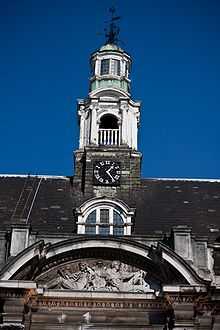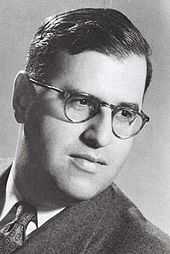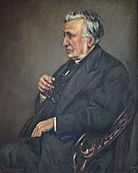St Olave's Grammar School
 | |
| Motto | Olaf to Right the Wrong |
|---|---|
| Established | 1561 |
| Type | Voluntary aided grammar school |
| Religion | Church of England |
| Headmaster | Aydin Önaç (2010-) |
| Relations | The Queen's Chapel of the Savoy |
| Chair | The Reverend Professor Peter John Galloway |
| Location |
Goddington Lane Orpington Greater London BR6 9SH England Coordinates: 51°22′03″N 0°06′14″E / 51.3675°N 0.104°E |
| Local authority | Bromley |
| DfE number | 305/5410 |
| DfE URN | 101676 Tables |
| Ofsted | Reports |
| Students | 934 |
| Gender | Boys (Mixed in the sixth form) |
| Ages | 11–18 |
| Houses |
Bingham , Cure Harvard , Leeke |
| Colours |
Main: Purple Black , White |
| Chaplain | Reverend Andrew McClellan |
| Affiliation | Member of the Woodard Foundation |
| Beneficiary of | Beneficiary of St Olave's and St Saviour's Schools Foundation and Dulwich Estate |
| Former Pupils | Old Olavians |
| Website |
www |
St Olave's and St Saviour's Grammar School (/ˈoʊlævz/ or /ˈɒlɪvz/) is a highly selective[1] boys' secondary school in Orpington, Greater London, England. The school is also known as St Olave's, St Olave's Grammar School, STOGS or simply Olave's.
The school in its current state was formed from an agreement in 1896 between two schools, St Olave's Grammar School (Charter 1571), and St Saviour's Grammar School (Charter 1562). A sister school, St Saviour's and St Olave's Church of England School,[2] was established in 1903. St Olave's Grammar School was founded for the parish of St Olave in Southwark (1096-1926) which was named after Saint Olaf.
The school is consistently one of the top achieving state schools in the UK. It was The Sunday Times State School of the Year in 2008[3] and in 2011 was ranked as the fourth best performing state school in the country at A-level by the Financial Times.[4]
Originally situated on the south bank of the Thames in Southwark, the school moved to suburban Orpington in 1968.
General information
The school is a beneficiary of the St Olave's and St Saviour's Schools Foundation,[5] which in turn is a beneficiary of The Dulwich Estate, successor to the historic Alleyn's College charity.[6] The school is also affiliated to the Woodard Foundation.
The school's headmaster is currently Aydin Önaç, newly appointed in September 2010. He is only the sixth headmaster of the school since 1896.
The school is heavily oversubscribed (more than 10 applicants per place in 2008). Entry is determined by competitive tests in English and Mathematics. Since 1998, the school has admitted girls to its sixth form. It was previously designated as a science, mathematics and computing specialist school. The school has also applied for academy status.
Members of the school are known as Olavians, and alumni as Old Olavians. There are four houses: Bingham, Cure, Harvard and Leeke. These exist for the purposes of the classes and house competitions in the Lower School (Year 7 to 9) and for games competition in Year 10.
St Olave's exclusively provides Choristers for the Choir of the Queen's Chapel of the Savoy, London, which is the Chapel of the Royal Victorian Order and of the Duchy of Lancaster.
The school was at the centre of controversy in 1996 when Labour Party Shadow Cabinet minister Harriet Harman sent her son to the school, despite it being some considerable distance from where she lived. Many considered her sending her son to a selective school to be contrary to Labour's supposedly egalitarian principles.
Its historic sister school is St Saviour's and St Olave's Church of England School in New Kent Road. Established in 1903, this is a non-selective girls' school in an economically deprived area that is very different in nature from its brother school. St Olave's now also has a strong relationship with Newstead Wood School, a selective girls' school situated about 1.5 miles away.
The school traditionally is very successful at chess, with many strong players who have represented their country in international tournaments, and are winners of the prestigious Millfield International Chess Tournament for the second year in a row.
There is a masonic lodge for Old Olavians and others associated with the school.[7]
History
St Saviour's Grammar School
A new lease for the parish church of St Saviour’s dated 16 June 1559 included a pledge to start a school within two years. Within a few weeks a school for boys was functioning in temporary accommodation. On 24 November 1560 the four first wardens of the school were elected, and on 4 March 1561 a lease was handed over to the wardens for a new schoolhouse: a building in the Green Dragon, formerly Cobham’s Inn. A licence/charter for St Saviour’s Grammar School was obtained in 1562.
In 1676 the building in the Green Dragon was destroyed in the Great Fire of Southwark—the City of London fire was in 1666—and a new building was built on the same site.
In 1839 the school site was required for the enlargement of the Borough Market and a third building was built in Sumner Street in 1839. It was smaller than the previous one due to a decline in numbers.
St Saviour’s Grammar School agreed to amalgamation with St Olave’s in 1896. At the same time the creation of a new school for girls was envisaged, and this came into being in 1903 and was named St Saviour’s and St Olave’s Grammar School for Girls.
St Olave’s Grammar School
Henry Leeke, a Southwark brewer, left a will (13 April 1560) which gave £8 a year towards the founding and maintenance of a new free school. If the parish of St Olave’s failed to create such a school within two years, St Saviour’s parish was to have the money.
In November 1560, notice to quit was given to tenants of the rooms which were to be used for the school, and in July 1561 the church wardens of St Olave’s were ordered to receive Leeke’s legacy, and “prepare” a schoolmaster by Michaelmas Day. Assuming that everything went to schedule, the school began teaching on Michaelmas Day 1561.
On 25 July 1571 letters patent were obtained which established the school as a grammar school. The charter stipulated that the school be called: The Free Grammar School of Queen Elizabeth of the Parishioners of the Parish of Saint Olave in the County of Surrey.
Initially the school was housed in the old Vestry Hall of the church and its adjoining premises (on the west side of Churchyard Alley, a narrow lane off the south side of Tooley Street, running parallel with Borough High Street).
In the seventeenth century St Olave's Headmaster Robert Browne was imprisoned for non-conformism.
Although the school was untouched by the Great Fire of Southwark, major renovation and extension was undertaken in 1676 after the fire.
In 1829 the school had to move because its site was needed for the approach to the new London Bridge, which was built about 60 yards west of the old bridge. A new building was built in Bermondsey Street, with the first stone being laid on 17 November 1834. However this building did not last long due to the rapid expansion of the railways, which wanted the land, and another building at Green Bank, in Back Street (later renamed Queen Elizabeth Street) was built in 1855.
This new building was soon deemed to be unsuitable due to the fact that it was designed for a system of teaching which fell out of favour, and had almost no provision for classrooms.

Another building was put up in stages on the same site, while the old building was dismantled. Work was begun in 1892 and completed in 1894. The new building was designed by E. W. Mountford, the architect of the Old Bailey, and it is this building which still stands in Queen Elizabeth Street near the approach to Tower Bridge (also completed in 1894).
The Queen Elizabeth Street building was abandoned by the school in 1968, when it moved to Orpington.
During World War II the former St Saviour's building in Sumner Street was damaged by bombing. Consequently, in 1952 the historic foundation stone was moved from Sumner Street to the Queen Elizabeth Street site. When the school was relocated to Orpington in 1968, the stone was taken to the new site.[8]
Notable Old Olavians
This is a partial list. For a more comprehensive one see: List of notable Old Olavians
- H. B. Acton, philosopher
- Sir William Ashley, economic historian
- Samuel Laman Blanchard, author and journalist
- William Cole, composer, organist and conductor, and Master of the Music at the Queen's Chapel of the Savoy
- Lawrence Durrell, novelist, poet, dramatist, and travel writer
- Abba Eban, Israeli Ambassador to the United Nations; Israeli Minister for Foreign Affairs; Israeli Deputy Prime Minister
- Mark Ellis, known as "Flood", record producer (U2, Depeche Mode, The Killers)
- Henry Hartley Fowler, 1st Viscount Wolverhampton, (1830–1911), politician †
- Andy Green, RAF fast jet pilot; current holder of the world land speed record
- Edmund Gwenn, Academy Award-winning actor
- John Harvard, first benefactor of Harvard University
- William Heberden, physician, coined the term "Angina pectoris" †
- Charles Hill, Baron Hill of Luton, Chairman of the BBC and ITA
- William Sherlock, English church leader
- Sir Desmond Arthur Pond, Professor of Psychiatry, Chief Scientist at the Department of Health and Social Security.
- George Tomlinson, Bishop of Gibraltar, founder of the Cambridge Apostles †
- Thomas Frederick Tout, historian
- William Van Mildert, Bishop of Durham; founder of the University of Durham †
- Sir Sydney Waterlow, 1st Baronet, Lord Mayor of London, MP †
- Godfrey Bloom, UKIP MEP
- David Akinluyi, Rugby player for Nigeria and Northampton Saints
- Bill Hazeldine, Film Critic and Actor
- Ryan Williams, UK financier, prominent Tesco PLC shareholder, cousin of UK Prime Minister David Cameron
- Nick Osipczak, UFC fighter
† Alumni of St Saviour's Grammar School prior to the merger
References
- ↑ http://www.telegraph.co.uk/education/educationnews/3309962/Any-questions.html
- ↑ Carrington, R. C. Two Schools: A History of the St. Olave's and St Saviour's Grammar School Foundation (London, 1971).
- ↑ http://www.timesonline.co.uk/parentpower/schools_of_the_year.php?p=state_secondary
- ↑
- ↑ St Olave's and St Saviour's Schools Foundation, Registered Charity no. 312987 at the Charity Commission
- ↑ The Dulwich Estate, Registered Charity no. 312751 at the Charity Commission
- ↑ According to the Lodge's web site, "Preference is given to those associated with St.Olave's Grammar School: old boys, staff, Governors, and their male relatives (including those of present/former students)." (See http://oldolavianslodge.org.uk/
- ↑ The history section draws its information mostly from Two Schools by Dr Roger Clifford Carrington, a former headmaster.
Further reading
- Carrington, R. C. Two Schools: A History of the St. Olave's and St. Saviour's Grammar School Foundation (London: The Governors of the St. Olave's and St. Saviour's Grammar School Foundation, 1971).
External links
- St Olave's Grammar School website
- The Old Olavians network
- The Old Olavians Rugby Club
- The Old Olavians Masonic Lodge
- Queen's Chapel of the Savoy
- St Saviour's and St Olave's Church of England School website
- Southwark Cathedral Foundation Schools
| ||||||||||||||||||||||||||
| ||||||||||||||||||||

